Abstract
Treponema denticola, an anaerobe commonly present in the human mouth, ferments various amino acids and glucose. Amino acid analyses indicated that substrate amounts of arginine were utilized by T. denticola growing in a complex, serum-containing medium. Cell suspensions metabolized L-arginine to citrulline, NH3, CO2, proline, and small amounts of ornithine. CO2, NH3, ornithine, and proline were produced from L-citrulline by cell suspensions. Determinations of radioactivity in products formed from L-[U-14C]ornithine indicated that cell suspensions converted this amino acid to proline. Furthermore, proline was excreted by cells growing in a complex, arginine-containing medium. Arginine iminohydrolase (deiminase) and ornithine carbamoyltransferase activities were detected in T. denticola cell extracts. Carbamoylphosphate dissimilation by extracts yielded adenosine triphosphate. The data indicate that T. denticola derives energy by dissimilating L-argine via the arginine iminohydrolase pathway. However, unlike some of the other bacteria that utilize this pathway, T. denticola converts to proline much of the ornithine derived from L-arginine.
Full text
PDF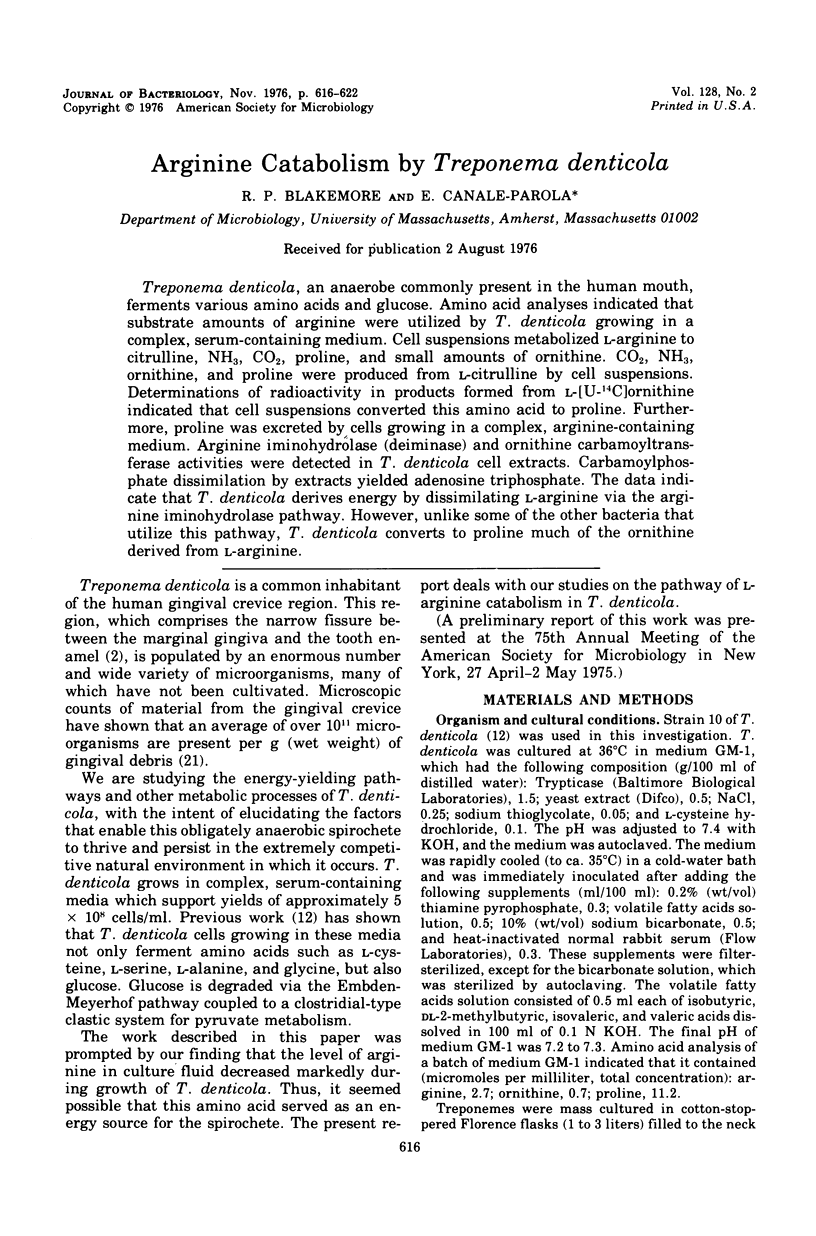
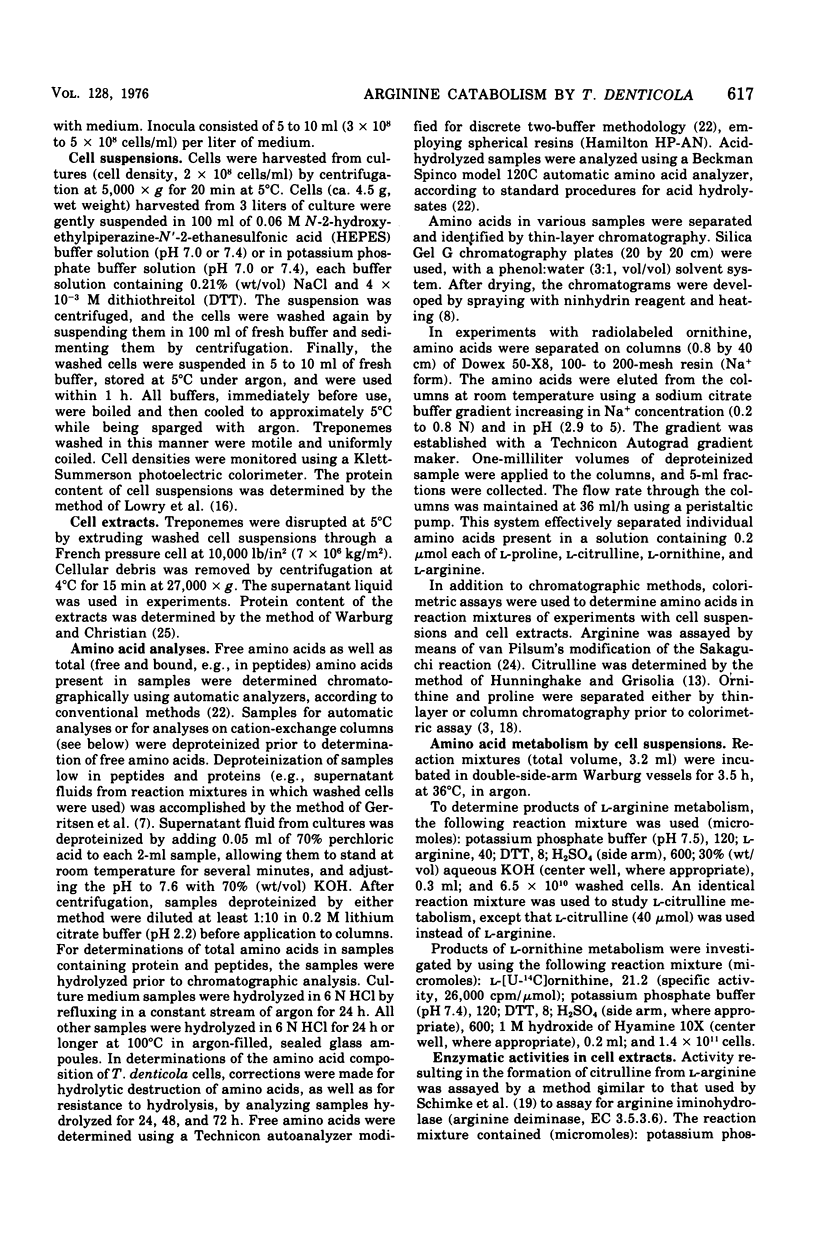
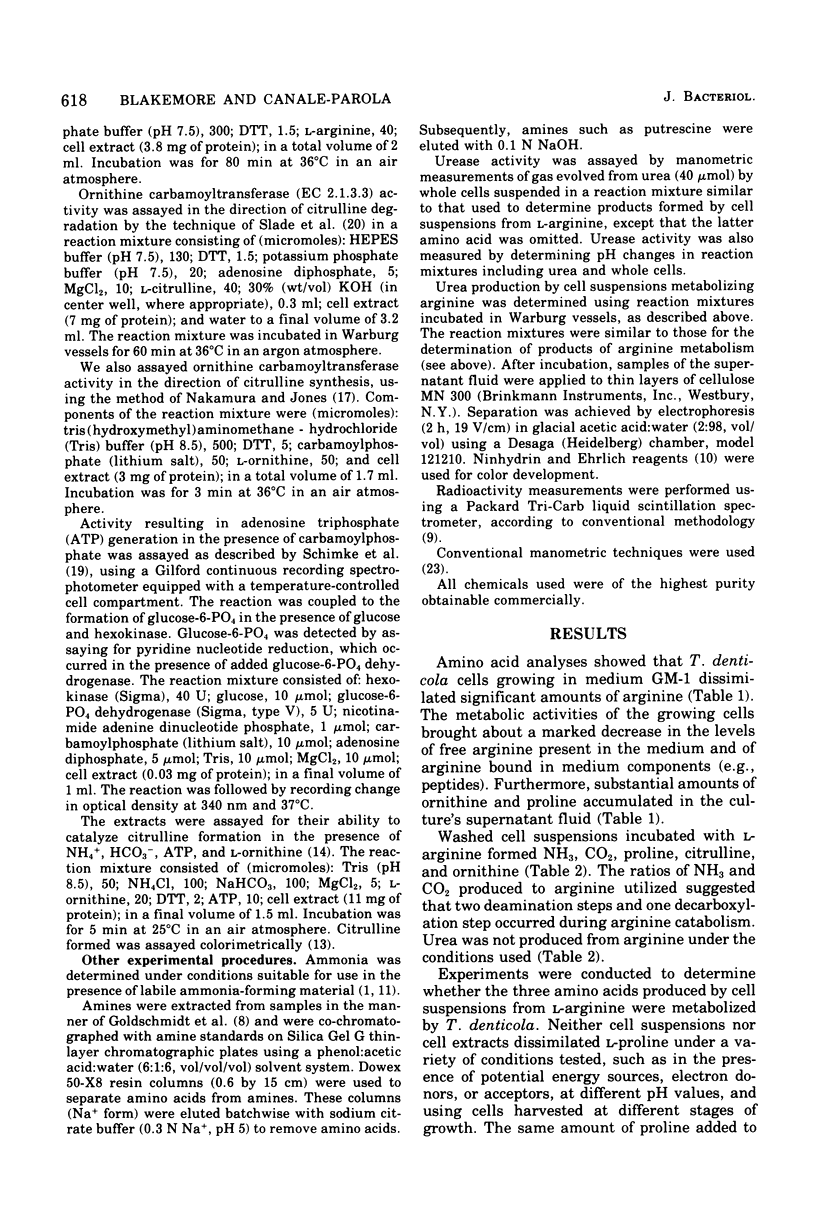

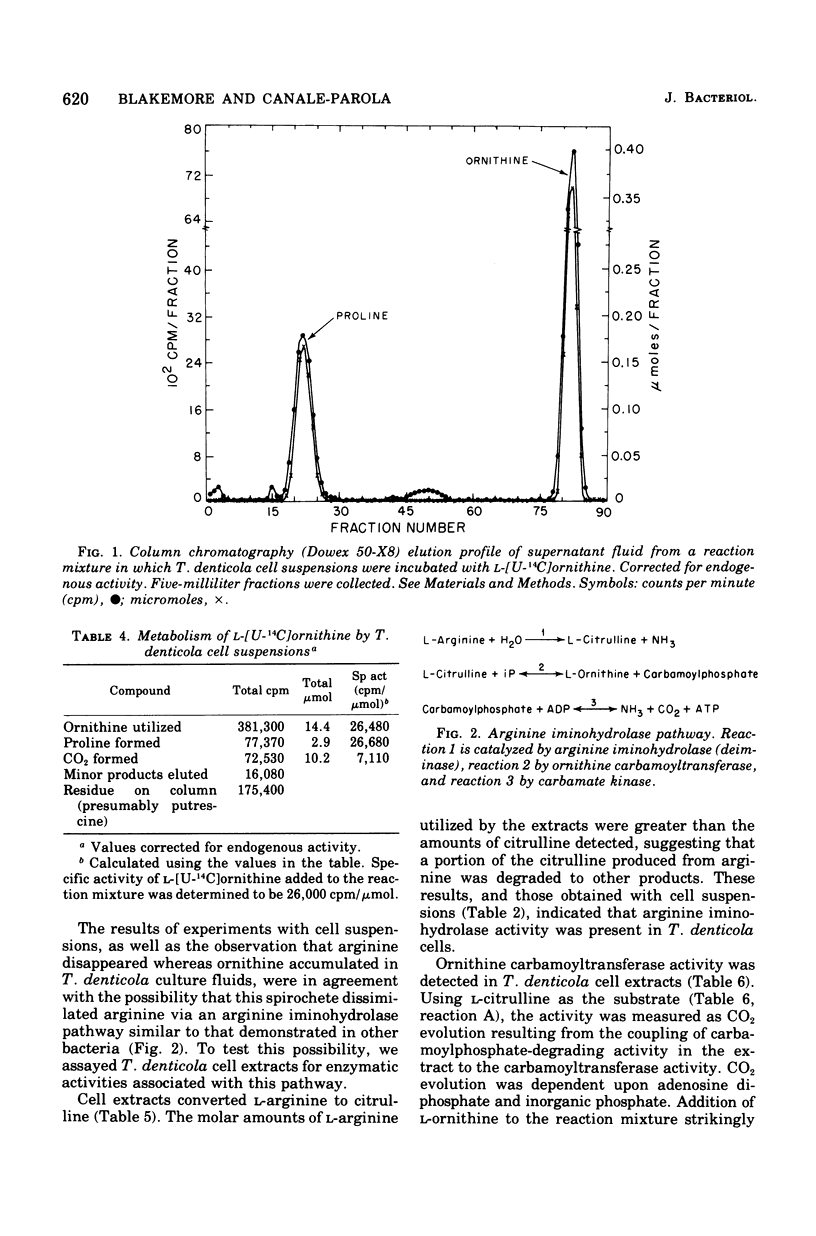
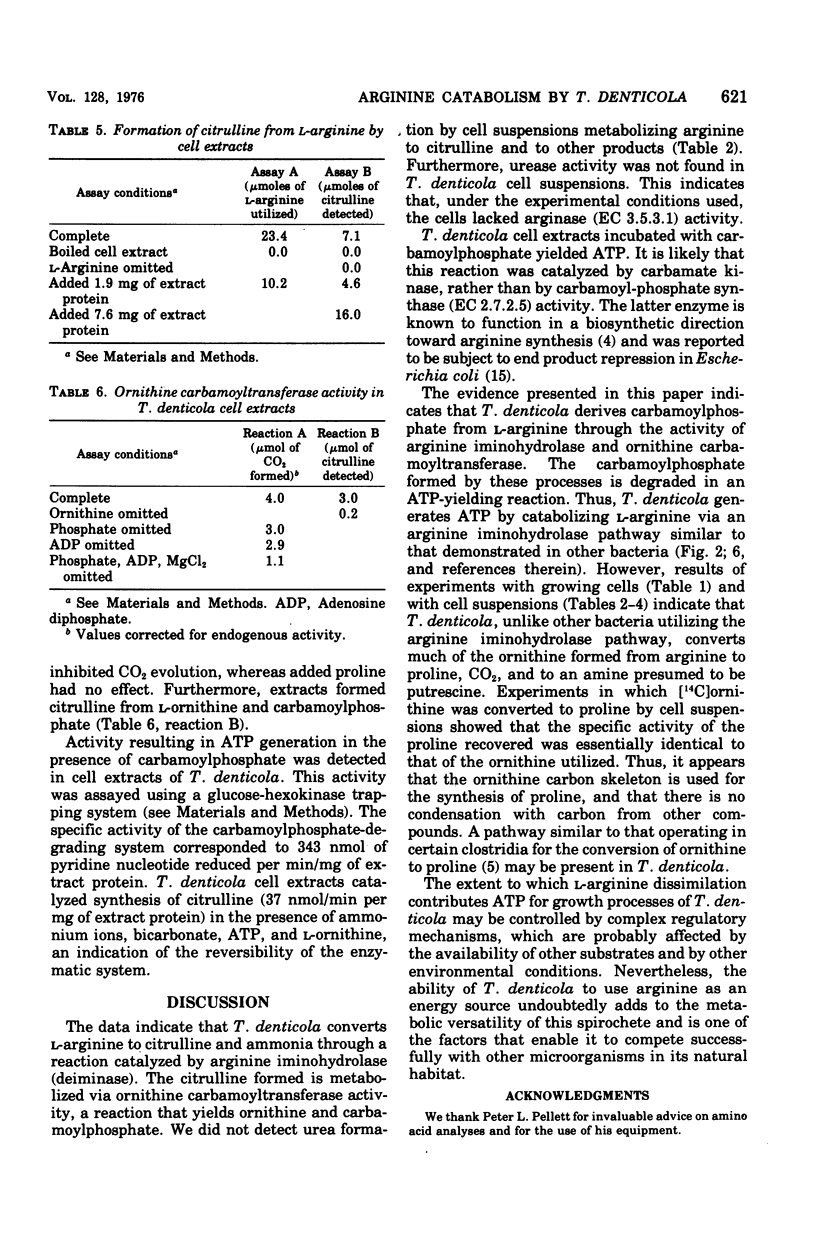
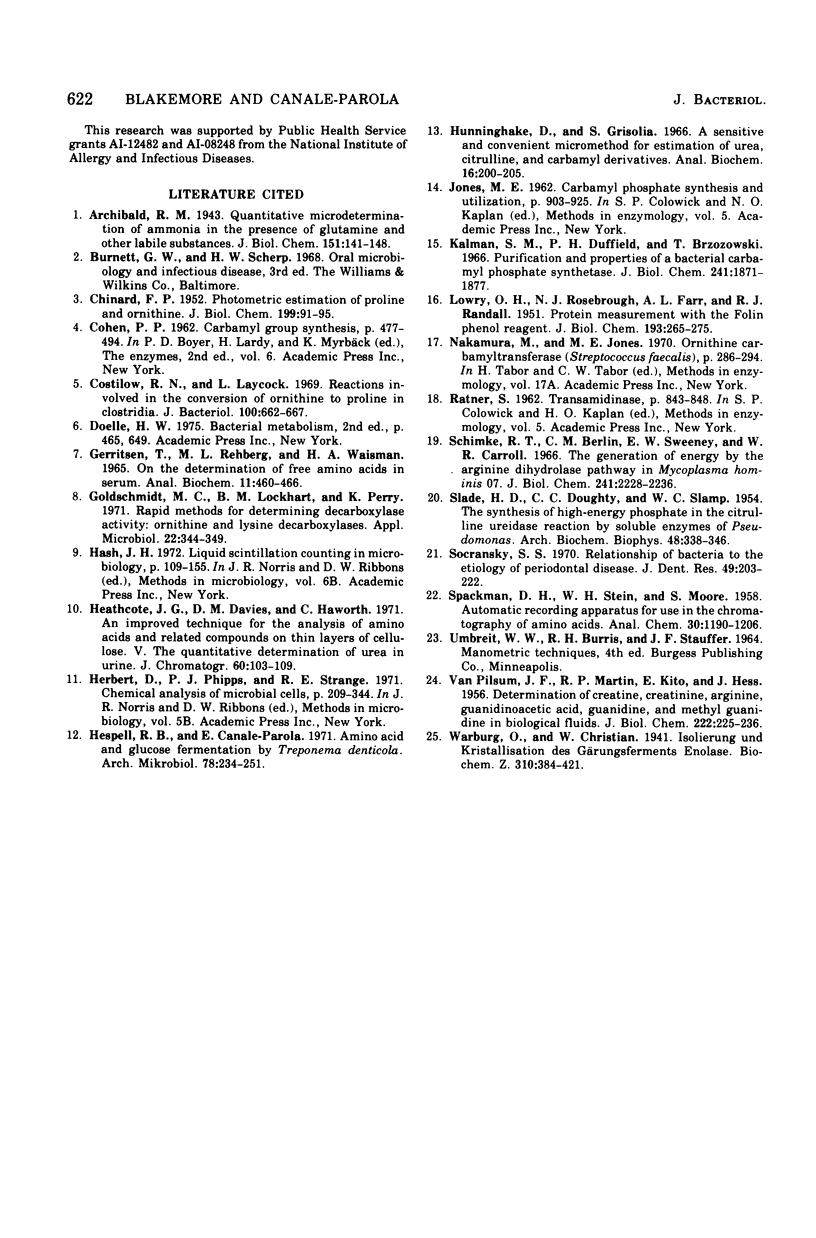
Selected References
These references are in PubMed. This may not be the complete list of references from this article.
- CHINARD F. P. Photometric estimation of proline and ornithine. J Biol Chem. 1952 Nov;199(1):91–95. [PubMed] [Google Scholar]
- Costilow R. N., Laycock L. Reactions involved in the conversion of ornithine to proline in Clostridia. J Bacteriol. 1969 Nov;100(2):662–667. doi: 10.1128/jb.100.2.662-667.1969. [DOI] [PMC free article] [PubMed] [Google Scholar]
- Goldschmidt M. C., Lockhart B. M., Perry K. Rapid methods for determining decarboxylase activity: ornithine and lysine decarboxylases. Appl Microbiol. 1971 Sep;22(3):344–349. doi: 10.1128/am.22.3.344-349.1971. [DOI] [PMC free article] [PubMed] [Google Scholar]
- HESS J., KITO E., MARTIN R. P., VAN PILSUM J. F. Determination of creatine, creatinine, arginine, guanidinoacetic acid, guanidine, and methylguanidine in biological fluids. J Biol Chem. 1956 Sep;222(1):225–235. [PubMed] [Google Scholar]
- Heathcote J. G., Davies D. M., Haworth C. An improved technique for the analysis of amino acids and related compounds on thin layers of cellulose. V. The quantitative determination of urea in urine. J Chromatogr. 1971 Aug 5;60(1):103–109. [PubMed] [Google Scholar]
- Hespell R. B., Canale-Parola E. Amino acid and glucose fermentation by Treponema denticola. Arch Mikrobiol. 1971;78(3):234–251. doi: 10.1007/BF00424897. [DOI] [PubMed] [Google Scholar]
- Hunninghake D., Grisolia S. A sensitive and convenient micromethod for estimation of urea, citrulline, and carbamyl derivatives. Anal Biochem. 1966 Aug;16(2):200–205. doi: 10.1016/0003-2697(66)90147-3. [DOI] [PubMed] [Google Scholar]
- Kalman S. M., Duffield P. H., Brzozowski T. Purification and properties of a bacterial carbamyl phosphate synthetase. J Biol Chem. 1966 Apr 25;241(8):1871–1877. [PubMed] [Google Scholar]
- LOWRY O. H., ROSEBROUGH N. J., FARR A. L., RANDALL R. J. Protein measurement with the Folin phenol reagent. J Biol Chem. 1951 Nov;193(1):265–275. [PubMed] [Google Scholar]
- SLADE H. D., DOUGHTY C. C., SLAMP W. C. The synthesis of high-energy phosphate in the citrulline ureidase reaction by soluble enzymes of Pseudomonas. Arch Biochem Biophys. 1954 Feb;48(2):338–346. doi: 10.1016/0003-9861(54)90349-5. [DOI] [PubMed] [Google Scholar]
- Schimke R. T., Berlin C. M., Sweeney E. W., Carroll W. R. The generation of energy by the arginine dihydrolase pathway in Mycoplasma hominis 07. J Biol Chem. 1966 May 25;241(10):2228–2236. [PubMed] [Google Scholar]
- Socransky S. S. Relationship of bacteria to the etiology of periodontal disease. J Dent Res. 1970 Mar-Apr;49(2):203–222. doi: 10.1177/00220345700490020401. [DOI] [PubMed] [Google Scholar]


